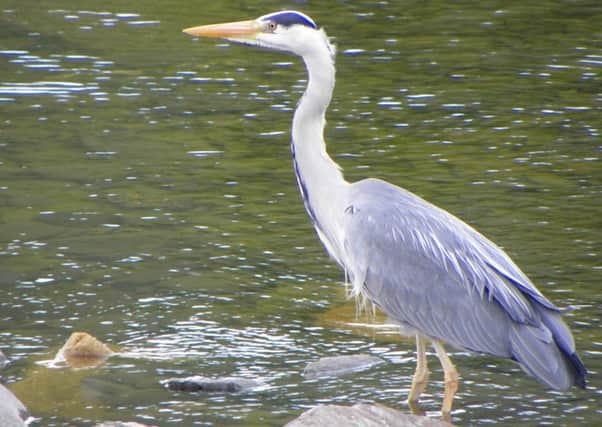Becoming familiar with the wildlife residents


Depending on the level of the river, on my local stretch of the Ettrick Water, there is usually a heron on a favourite stone, standing stock still, staring into the shallow water. I presume it is always the same one, as I have seen it chase off other herons, who venture too close to this obviously prime fishing site.
I usually see a small group of female goosanders diving for fish, but they too are seen off by the heron if they approach too near to his stone.
Advertisement
Hide AdAdvertisement
Hide AdThere is often at least one and sometimes a pair of dippers patrolling this stretch of river, which they have already claimed as their territory and will see off any other encroaching dippers with quite extreme ferocity.
Black headed gulls and mallards are sometimes present but there is one bird which I always look out for especially. Now and again I have been lucky enough to see the resident kingfisher. They are extremely vocal birds when flying and their monotonous, shrill “peep peep” call is usually a dead giveaway to the bird’s whereabouts. It is often the case in Nature that the brighter and more spectacular the plumage, the poorer the song and it is certainly true in the case of the kingfisher.
I have often wondered why the kingfisher sports such exotic coloured plumage, which always makes it so noticeable to the human eye and I found one explanation in an old bird book, published a century ago. It states that its colour protects the bird when diving. “The underparts are much the same colour as a fallen leaf and this arouses no suspicion in the fish - the back, on the other hand, shines like the blue shimmer of the running stream, and that often protects the bird from the circling sparrow hawk”.
At one time it was persecuted for poaching hatchery fish and was also shot as a source of bright coloured feathers for fishing flies, but thankfully, the kingfisher now enjoys full protection and has made quite a comeback, here in the Borders, after almost disappearing completely, in the severe winter of 1962/63.
Advertisement
Hide AdAdvertisement
Hide AdAccording to Greek legend, the bird - which they called ‘halcyon’, bred in a floating nest at sea, at the time of the winter solstice, calming the high winds and stormy waves – far removed from reality, where the bird nests in a hole in the riverbank, which stinks of rotting fish! Today “halcyon” has come to mean any calm, peaceful and happy time.
The sight of the iridescent blue streak flashing past as I take ‘Treacle’ for her walk, certainly brightens up my day.
Don’t forget, you can E-mail me on [email protected]